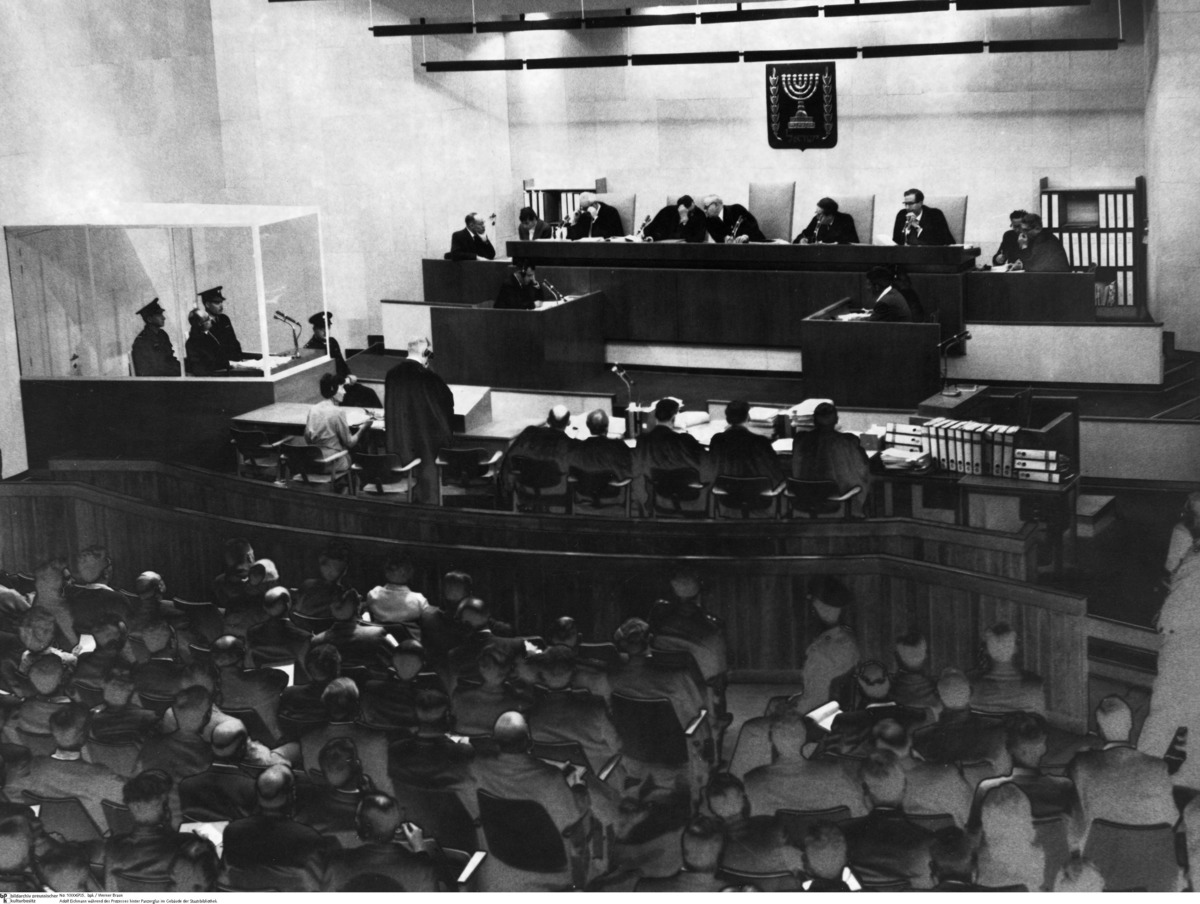Abstract
During the Third Reich, Adolf Eichmann (1906–1962) served as an SS
Obersturmbannführer and as head of
Department IV B 4 (Jewish Affairs and Evacuation) at the Reich Security
Main Office
[Reichssicherheitshauptamt or RSHA].
He wrote the protocol at the Wannsee Conference and played a significant
role in the deportation of Jews during the implementation of the “Final
Solution.” In May 1960, Eichmann, then living in Argentina under an
assumed name, was kidnapped by Israeli intelligence and brought to
Jerusalem to stand trial. The proceedings against him began on April 10,
1961. He was sentenced to death in December 1961 and executed on June 1,
1962. The Eichmann Trial received extensive press and television
coverage and was followed by a large international audience. Along with
the Einsatzgruppen Trial in Ulm in
1958, and the subsequent establishment of the “Central Office of State
Legal Administrations for the Investigation of National Socialist
Crimes” in Ludwigsburg, the Eichmann Trial marked an important step in
West German society’s examination of the Nazi past. The First Frankfurt
Auschwitz Trial (1963–65) was another significant step in this
direction.
